Historical and Cultural Landmarks You Can’t Miss in the Dominican Republic
Exploring Santo Domingo’s Colonial Zone
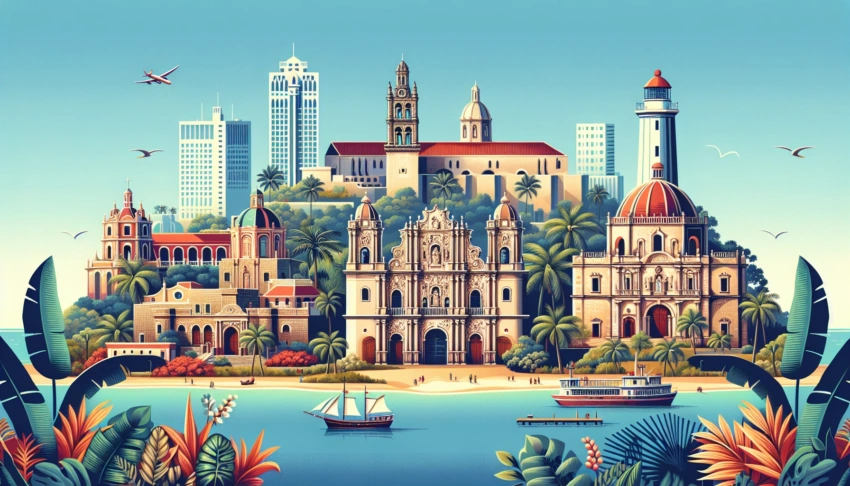
Historical and Cultural Landmarks You Can’t Miss in the Dominican Republic
Step into the pages of history as you wander through Santo Domingo’s Colonial Zone, the beating heart of the Dominican Republic’s storied past. This vibrant district, a UNESCO World Heritage site, serves as a living museum that transports visitors back to the dawn of the New World. Founded in 1498, Santo Domingo was the first city established in the Americas, making it a cornerstone of colonial history.
1. The Alcázar de Colón
Prepare to be mesmerized by the Alcázar de Colón, a stunning example of Gothic-Mudéjar architecture and the former residence of Diego Columbus, son of the famed explorer Christopher Columbus. This grand structure, built between 1510 and 1514, offers a unique glimpse into the opulent lifestyle of colonial governors. As you explore its 22 rooms filled with period furniture and art, you’ll feel the echoes of the past whispering through the corridors.
The Alcázar, overlooking the Ozama River, was not only a home but also a center of power, where Diego Columbus governed the Indies. The museum now housed within its walls exhibits fascinating artifacts, including original documents, that reveal the complex tapestry of colonial life. Don’t miss the intricately carved wooden ceilings and the breathtaking views from the terrace, which provide a majestic panorama of the river and beyond.
2. Catedral Primada de América
Marvel at the architectural grandeur of the Catedral Primada de América, the oldest cathedral in the Americas. This magnificent structure stands as a testament to the Spanish Renaissance style and was completed in 1540. As you step inside, the cathedral’s soaring vaults and intricate stained glass windows will leave you in awe.
Beyond its architectural beauty, the cathedral holds immense historical significance. It was the first headquarters of the Archdiocese of the New World and served as a spiritual center for explorers and settlers. The cathedral’s treasury is a veritable trove of religious art and artifacts, including the silver altar and the ancient tomb of an unknown bishop. Each element within the cathedral tells a story, inviting you to explore the spiritual and cultural evolution of the Dominican Republic.
3. Parque Colón
As you meander through the charming cobblestone streets, you’ll stumble upon Parque Colón, a lively square that serves as the Colonial Zone’s social and cultural hub. Dominated by a towering statue of Christopher Columbus, the park is surrounded by historical buildings that provide a picturesque backdrop to the bustling activity.
Parque Colón is more than just a pretty spot; it’s a vibrant gathering place where locals and tourists alike come to unwind. As you sit on one of the benches, soaking up the sun, you’ll be serenaded by the melodies of street musicians and entertained by the antics of performers. The square is flanked by the Catedral Primada de América and the historic Hotel Conde, offering a perfect blend of past and present. It’s an ideal spot to relax and reflect on the rich history of Santo Domingo.
Unveiling the Historical Fortresses
Discovering the Dominican Republic’s historical fortresses is like stepping into a time machine that whisks you back to the age of exploration, conquest, and colonial intrigue. These formidable structures stand as proud testaments to the country’s colorful past, offering a tantalizing peek into the military strategies and architectural prowess of the colonial era.
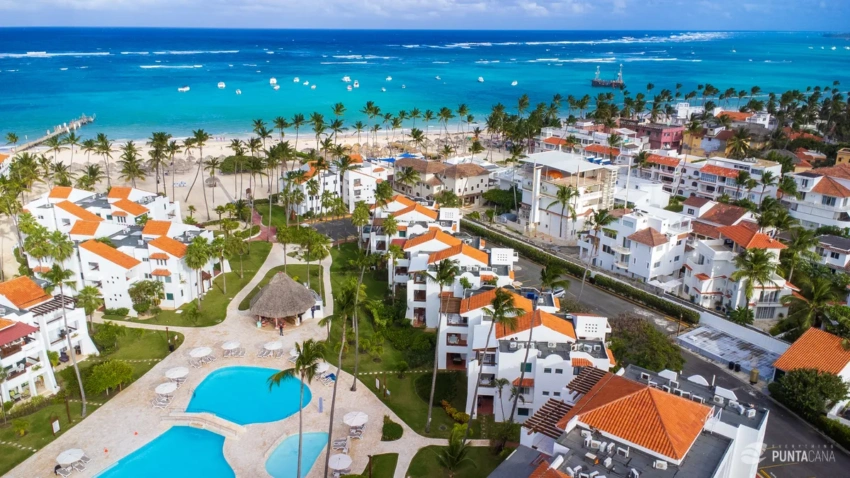 Punta Cana
Punta Cana
1. Fortaleza Ozama
Nestled within the vibrant city of Santo Domingo, Fortaleza Ozama is the oldest surviving European fortress in the Americas. Built between 1502 and 1508, this imposing structure was strategically positioned to defend against pirates and foreign invaders. As you wander through its ancient stone corridors, imagine the clashing swords and cannonballs echoing through the air—scenes straight out of a pirate movie!
Architecturally, Fortaleza Ozama is a masterpiece of colonial military design. Its thick walls and imposing towers offer a robust defense, while the commanding views of the Ozama River and the Caribbean Sea provide a breathtaking backdrop. Today, the fortress serves as a UNESCO World Heritage site, welcoming history enthusiasts from around the globe to explore its storied past.
2. Fortaleza San Felipe
Perched on a promontory overlooking the shimmering waters of Puerto Plata, Fortaleza San Felipe is another gem in the Dominican Republic’s treasure trove of historical landmarks. This fortress, completed in 1577, played a crucial role in protecting the northern coast from pirates and European powers vying for control of the Caribbean.
The fortress itself is a marvel of engineering, with its robust stone walls and strategically placed cannons offering both defense and intimidation. Visitors can explore the fortress’s interior, where exhibits detail its history, and climb to the top for panoramic views of the sapphire-blue Atlantic Ocean. The combination of historical significance and natural beauty makes Fortaleza San Felipe a must-visit for anyone keen to delve into the Dominican Republic’s colonial heritage.
3. Fortaleza San Luis
Located in the heart of Santiago, Fortaleza San Luis is a symbol of resilience and national pride. Built in the mid-19th century, this fortress played a pivotal role during the Dominican Restoration War, a conflict that saw the country regain its independence from Spanish rule.
Fortaleza San Luis stands not only as a testament to military strategy but also as a cultural hub. Its museum houses a fascinating collection of artifacts from the war, offering visitors a deeper understanding of the struggles and triumphs that shaped the nation. As you wander through its halls, you’ll feel the weight of history and the enduring spirit of those who fought for freedom.
Our Best Tours in Punta Cana
For those eager to experience these historical marvels firsthand, our curated tours offer the perfect blend of adventure and education. Discover the secrets of the fortresses with expert guides who bring history to life, making your visit both informative and entertaining.
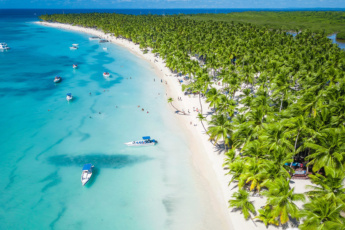
Saona Island Excursion - Caribbean Paradise
from $75 Read more
Swimming with Dolphins in Punta Cana - Top Adventure 2025 (50 minutes)
from $155 Read moreUnveiling the historical fortresses of the Dominican Republic is not just an exploration of the past but an exhilarating journey that ignites the imagination and enriches the soul. Don’t miss the chance to walk in the footsteps of history and uncover the stories that shaped this vibrant nation.
Cultural Heritage of the Cibao Region
Nestled in the heart of the Dominican Republic, the Cibao region is a vibrant tapestry of history, culture, and tradition. From monumental tributes to historical figures to the lively rhythms of one of the oldest carnivals in the Americas, the Cibao region offers a mosaic of experiences that capture the essence of Dominican heritage.
1. Monumento a los Héroes de la Restauración
Perched majestically in Santiago, the Monumento a los Héroes de la Restauración stands as a towering tribute to the bravery and patriotism of the figures who fought for the Dominican Republic’s independence during the Restoration War. This monument, originally commissioned by Rafael Trujillo in 1944, was later repurposed to honor the heroes of the 1863-1865 war that restored the country’s sovereignty from Spanish rule.
Visitors are often captivated by the monument’s neoclassical architecture, which is as grand as the stories it represents. Climb to the top for a breathtaking panoramic view of Santiago, and don’t forget to explore the museum within, which provides a deeper understanding of the historical context and significance of the Restoration War.
2. Centro León
The Centro León in Santiago is a cultural oasis that offers a deep dive into the arts and history of the Dominican Republic. This center is a hub for cultural education and appreciation, featuring exhibitions that span Dominican art, music, and history. The architecture of the building alone is worth the visit, but it’s the rich collections inside that truly captivate.
Engage with interactive displays that tell the stories of Dominican culture, from the indigenous Taino influences to the vibrant modern art scene. The center also hosts workshops and events that celebrate the country’s diverse heritage. Whether you’re an art enthusiast or a history buff, Centro León is sure to enrich your understanding of the Dominican Republic’s cultural identity.
3. La Vega’s Carnaval
If you find yourself in the Cibao region during February, missing La Vega’s Carnaval would be a travesty. This carnival isn’t just a feast for the senses, it’s a historical immersion into one of the most vibrant traditions of the Dominican Republic.
With roots tracing back to the Spanish colonial era, La Vega’s Carnaval is one of the oldest in the Americas. The streets come alive with colorful costumes, energetic music, and the playful antics of the Diablos Cojuelos—mischievous devils who are as entertaining as they are traditional. Each costume tells a story, and partaking in the festivities is like stepping into a living, breathing history book.
In addition to the parades, the event features events that highlight Dominican folklore and cuisine, offering a sensory overload that keeps both locals and tourists coming back year after year.
Discovering Indigenous Heritage
The Dominican Republic is not just about its sunny beaches and vibrant nightlife; it is also a land rich with the whispers of its earliest inhabitants, the Taino. Delve into the fascinating world of this indigenous people who once thrived across the island, leaving behind a legacy of art, culture, and history that continues to captivate visitors today.
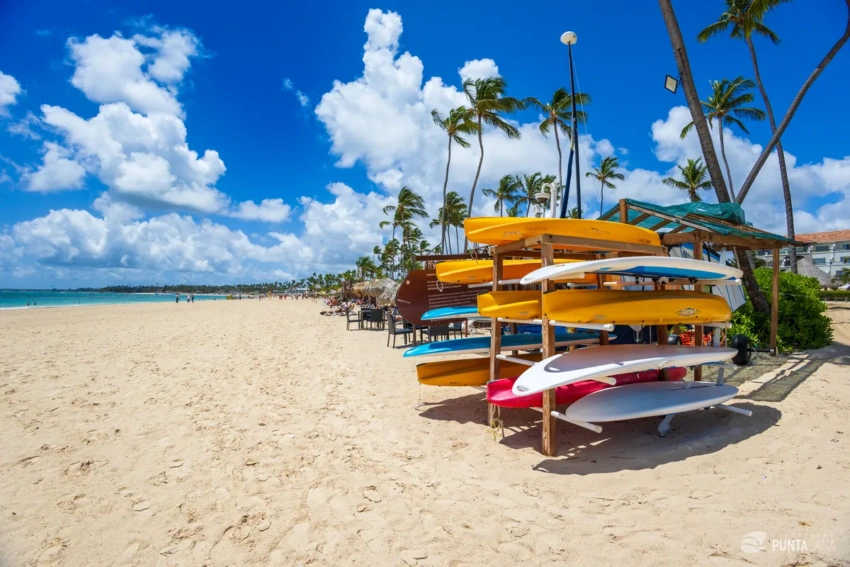
Punta Cana
1. Cueva de las Maravillas
Located between San Pedro de Macorís and La Romana, the Cueva de las Maravillas is a mesmerizing cave system that takes you on a journey back in time. This underground wonderland is adorned with over 500 ancient Taino petroglyphs and pictographs, offering a glimpse into the spiritual and everyday life of the Taino people.
The cave’s name, which translates to the “Cave of Wonders,” is fitting given its enchanting stalactites and stalagmites that create a natural art gallery. As you wander through the illuminated pathways, you can almost hear the whispers of the Taino spirits echoing through the corridors. Guided tours provide insights into the significance of the cave’s artwork, revealing stories of Taino mythology and the rituals that took place in this sacred space.
2. Parque Nacional Jaragua
Venture further into the past at Parque Nacional Jaragua, a sprawling national park located in the southwestern Dominican Republic. This UNESCO Biosphere Reserve is not only a haven for biodiversity but also a treasure trove of archaeological sites that shed light on the Taino way of life.
The park is home to several caves that contain Taino petroglyphs, offering a unique opportunity to explore the intersections of nature and history. As you traverse the park’s rugged landscapes, you may also encounter rare wildlife species, including the endemic rhinoceros iguana. The park’s rich ecosystem and cultural significance make it a must-visit for those keen on understanding the island’s pre-Columbian heritage.
3. Taino Artifacts at the Museo del Hombre Dominicano
For those who prefer an indoor exploration of Taino culture, the Museo del Hombre Dominicano in Santo Domingo is a treasure trove of artifacts that provide a window into the lives of the island’s first inhabitants. This museum houses an extensive collection of Taino relics, from intricately carved wooden statues to ceremonial bowls and tools.
Each artifact tells a story of the Taino’s daily lives, beliefs, and artistry. The museum’s exhibits are thoughtfully curated to educate visitors about the Taino’s sophisticated society, which thrived before the arrival of European colonizers. A visit here not only enriches one’s understanding of the Dominican Republic’s indigenous roots but also underscores the resilience and cultural contributions of the Taino people.
Our Best Tours in Parque Nacional Jaragua
Embark on an unforgettable journey through the lush landscapes and historical landmarks of Parque Nacional Jaragua with our expertly guided tours. Experience the magic of Taino heritage firsthand while exploring the natural beauty and archaeological wonders of this extraordinary park.

Punta Cana Private Boat Trip at the Best Price - 3-Hour Exclusive Tour with Snorkeling (from Jellyfish to Cabeza de Toro)
from $590 Read more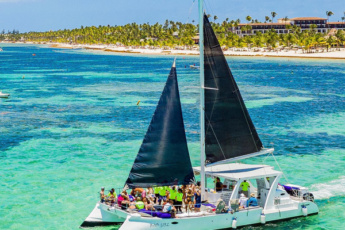
Power Cruise – Punta Cana Party Experience on the Bad Girl Catamaran
from $65 Read moreArchitectural Marvels of Trujillo’s Era
The era of Rafael Trujillo, the Dominican Republic’s infamous dictator, left a significant architectural imprint across the nation. While Trujillo’s reign is clouded with controversy, the period also gave rise to some of the most iconic structures, blending neoclassical and modernist styles. These landmarks stand as a testament to a complex period in Dominican history, providing a window into the past that sparks both admiration and reflection.
1. Palacio Nacional
Standing majestically in Santo Domingo, the Palacio Nacional is a prime example of neoclassical architecture, echoing the grandeur of the past while serving as the present-day seat of the Dominican government. Designed by architect Guido D’Alessandro and inaugurated in 1947, this stately building features a stunning white façade adorned with grand columns and intricate detailing that speaks volumes of Trujillo’s ambition to showcase power and prestige.
Visitors can explore the lush gardens that surround the palace, which are meticulously maintained, offering a serene escape from the bustling city. The interior, while not always open to the public, is said to house opulent rooms and halls that hosted many significant political events during Trujillo’s rule. The Palacio Nacional is not merely a government building; it is a symbol of the era’s architectural aspirations and excesses.
2. El Obelisco Macho
The El Obelisco Macho is a towering monument that stands proudly along the Malecón, the seafront boulevard in Santo Domingo. Erected in 1936 to commemorate Trujillo’s survival of an assassination attempt, this obelisk is more than just a visual spectacle; it represents the dictator’s pervasive influence over the nation. Initially named Obelisco de Trujillo, it was later renamed to reflect its historical significance beyond the dictator himself.
El Obelisco Macho has since become a canvas for various artistic expressions, often adorned with murals and messages of freedom and resistance. These artistic endeavors transform the monument into a symbol of resilience and hope, a testament to the Dominican people’s enduring spirit.
3. Museo de Arte Moderno
For those interested in the intersection of art and architecture, the Museo de Arte Moderno offers a fascinating exploration of modern art within a building that reflects the architectural sensibilities of Trujillo’s era. Located in the Plaza de la Cultura in Santo Domingo, the museum is one of the largest in the Caribbean and showcases a diverse collection of Dominican and international contemporary art.
The museum’s design, with its clean lines and open spaces, is indicative of the modernist influences that began to permeate Trujillo’s architectural projects. Inside, visitors can wander through exhibits that highlight not only the evolution of Dominican art but also the cultural shifts that occurred during and after Trujillo’s time. The museum invites guests to reflect on how art and architecture can serve as both a mirror and a critique of society.
These architectural landmarks of Trujillo’s era offer more than just aesthetic appeal; they provide a narrative of a tumultuous yet pivotal period in the Dominican Republic’s history. Whether you’re an architecture enthusiast or a history buff, these sites are a must-see on your journey through the Dominican Republic.
Frequently Asked Questions
What are the must-visit historical landmarks in the Dominican Republic?
Some of the must-visit historical landmarks in the Dominican Republic include the Colonial Zone in Santo Domingo, which is a UNESCO World Heritage site, the Alcázar de Colón, and the Catedral Primada de América. These sites offer a glimpse into the rich history and architecture of the country.
Why is the Colonial Zone in Santo Domingo significant?
The Colonial Zone in Santo Domingo is significant because it is the oldest European settlement in the Americas, dating back to the late 15th century. It features a wealth of historical buildings, including the first cathedral and the oldest paved street in the New World.
What cultural experiences can I enjoy in the Dominican Republic?
In the Dominican Republic, you can enjoy cultural experiences such as exploring the vibrant music and dance scene, especially merengue and bachata. You can also visit local art galleries and museums, and participate in festivals showcasing the country’s diverse heritage.
How can I learn about the indigenous history of the Dominican Republic?
To learn about the indigenous history of the Dominican Republic, visit the Altos de Chavón Regional Museum of Archaeology, which showcases artifacts from the Taino people. Additionally, guided tours of the Cueva de las Maravillas provide insights into pre-Columbian cave art.
Is it safe to visit historical sites in the Dominican Republic?
Yes, it is generally safe to visit historical sites in the Dominican Republic. However, it is always advisable to stay alert, keep your belongings secure, and follow local guidelines. Consider hiring a reputable guide for a more informative and secure experience.
What is the significance of the Alcázar de Colón?
The Alcázar de Colón is the former residence of Diego Columbus, the son of Christopher Columbus. It is a significant historical landmark that offers insights into the lifestyle of the colonial elite and is now a museum showcasing period furnishings and artifacts.
Are there any cultural festivals I should attend in the Dominican Republic?
Yes, the Dominican Republic hosts several vibrant cultural festivals, such as the Dominican Carnival in February, featuring colorful parades and traditional costumes, and the Merengue Festival in July, celebrating the country’s famous music and dance.
What is the best time to visit the historical landmarks in the Dominican Republic?
The best time to visit the historical landmarks in the Dominican Republic is during the cooler, drier months from December to April. This period offers the most comfortable weather for exploring outdoor sites without the risk of heavy rain.
Can I visit the Catedral Primada de América?
Yes, visitors can explore the Catedral Primada de América, which is the oldest cathedral in the Americas. It is open to the public, and guided tours are available to provide historical context and architectural insights.
